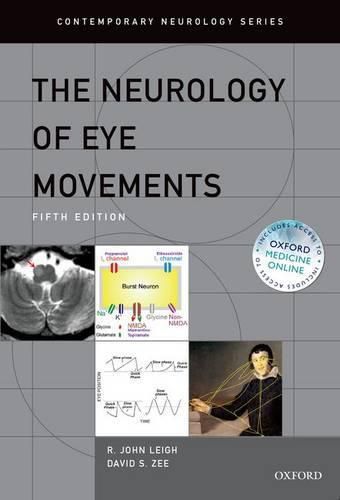Readings Newsletter
Become a Readings Member to make your shopping experience even easier.
Sign in or sign up for free!
You’re not far away from qualifying for FREE standard shipping within Australia
You’ve qualified for FREE standard shipping within Australia
The cart is loading…






This new edition of Leigh and Zee’s Neurology of Eye Movements is available as an enhanced edition for the first time. Your purchase of the print version includes access to the online version via Oxford Medicine Online. By activating your unique access code, you can discover more than 200 videos, view and enlarge nearly 250 high resolution images, and annotate the work for future personal reference. The Neurology of Eye Movements, edition 5, has two interrelated parts. The first comprises a modern synthesis of the anatomical, physiological, and pharmacological substrate for eye movements, including current views on the reflexive and voluntary control of gaze. This synthesis is based on electrophysiological and inactivation studies in macaque, and behavioural studies in humans that incorporate functional imaging and transcranial magnetic stimulation (TMS) in normals, and clinicopathological studies in patients with neurological, visual, or vestibular disorders. Sophisticated experimental paradigms have been applied to both species to explore aspects of cognition, memory, volition, and reward. This large body of research has demonstrated the power of eye movements as experimental tools. The second part of the book applies this synthesis to the clinical and laboratory evaluation of patients with abnormal eye movements due to a broad range of disorders - from muscular dystrophy, and genetic disorders, to dementia, including visual and vestibular conditions. By placing links to figures, tables, boxes, and videos, a synthesis of basic research and clinical findings is provided, that may shed new light on disease processes and provide insights on normal brain function.
Readership: Neurologists, ophthalmologists, otolaryngologists, optometrists, neuroscientists, biomedical engineers, psychologists, computation biologists
$9.00 standard shipping within Australia
FREE standard shipping within Australia for orders over $100.00
Express & International shipping calculated at checkout
This new edition of Leigh and Zee’s Neurology of Eye Movements is available as an enhanced edition for the first time. Your purchase of the print version includes access to the online version via Oxford Medicine Online. By activating your unique access code, you can discover more than 200 videos, view and enlarge nearly 250 high resolution images, and annotate the work for future personal reference. The Neurology of Eye Movements, edition 5, has two interrelated parts. The first comprises a modern synthesis of the anatomical, physiological, and pharmacological substrate for eye movements, including current views on the reflexive and voluntary control of gaze. This synthesis is based on electrophysiological and inactivation studies in macaque, and behavioural studies in humans that incorporate functional imaging and transcranial magnetic stimulation (TMS) in normals, and clinicopathological studies in patients with neurological, visual, or vestibular disorders. Sophisticated experimental paradigms have been applied to both species to explore aspects of cognition, memory, volition, and reward. This large body of research has demonstrated the power of eye movements as experimental tools. The second part of the book applies this synthesis to the clinical and laboratory evaluation of patients with abnormal eye movements due to a broad range of disorders - from muscular dystrophy, and genetic disorders, to dementia, including visual and vestibular conditions. By placing links to figures, tables, boxes, and videos, a synthesis of basic research and clinical findings is provided, that may shed new light on disease processes and provide insights on normal brain function.
Readership: Neurologists, ophthalmologists, otolaryngologists, optometrists, neuroscientists, biomedical engineers, psychologists, computation biologists